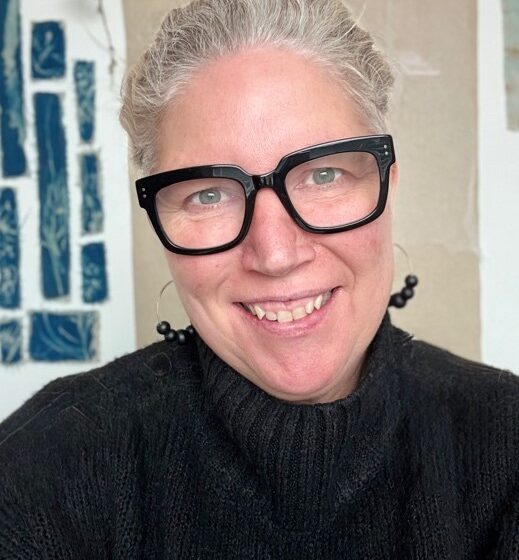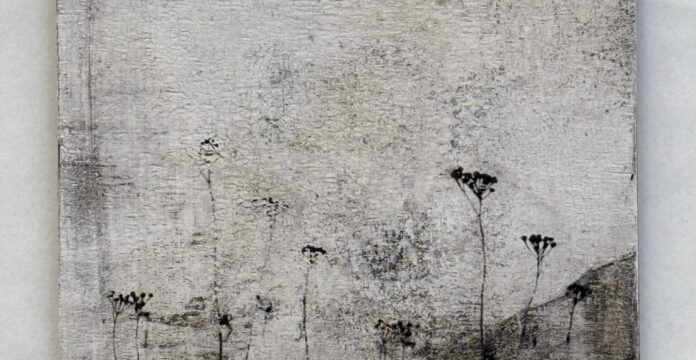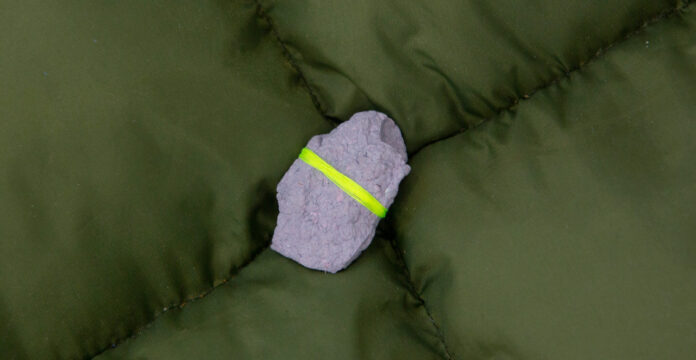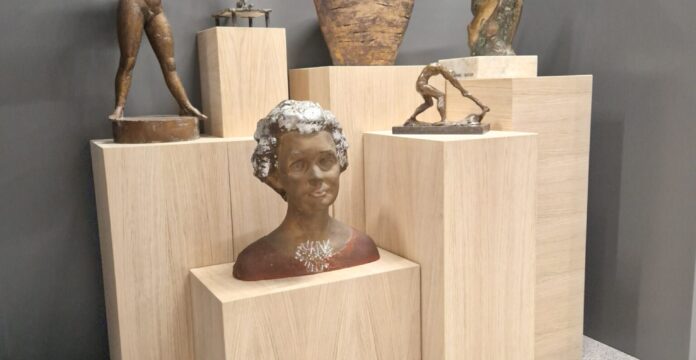– Found in Translation shows us how visiting artist Katey O’Sullivan used art to connect to people and place.
Interview: Mette Rahiala
Timed to coincide with her work in Butterfly: glo-cal effects of data, energy and industry and opening on the Vaasa Night of the Arts (Thursday, August 14th, 2025) Australian artist Katey O’Sullivan, is returning to Vaasa to exhibit a new body of work ‘Found in Translation’ at the Tritonia Library Art Space.
Earlier in the year Katey spent 3 months as artist in residence at UWASA and this collection of work is a reflection on her time spent on campus, in Vaasa, and the Ostrobothnia region. In this interview we find out a little more about the artist, her process, and why she thinks visual art is so important.
Tell us about your art journey:
I can’t remember a time when I haven’t loved to make pictures, be it painting, drawing with pencils, dragging driftwood in the sand, taking photos, or arranging found objects. I dreamed of studying the arts and working as a photographer for National Geographic, but the reality was different. After working and raising a family, in 2020 I went back to university, and I completed a Bachelor of Creative Arts (Visual Art) earlier this year.
What type of art do you like to make?
I like to work across many mediums, so it is difficult to identify as one type of visual artist. I like to research and experiment, and often make conceptual pieces that are large scale with a focus on materials. The work I have made for ‘Found in Translation’ is a little different, much smaller than I usually make, to be portable for travel between Finland and Australia. The consistency lies in the way that my works are layered with personal connections to significant places and moments in time, utilising repurposed vintage linens, stitch, and visual storytelling to convey meaning. I like to celebrate the ordinary and draw attention to the overlooked.
How did spending time in Vaasa influence your work?
My artist residency informed everything in this exhibition. The artist book is the key to the show. It presents as a gift containing handwritten words collected from conversations in a place that was new and foreign to me. These fragments helped me translate my thoughts, gain insight into the university community, and understand my purpose. The words connected me, connected us.
The history surrounding the Cotton Mill, the female workers, and the textile industry generally, deeply resonated with my previous work and was central to my research-based practice in Vaasa. And then there is the nature and the sea – impossible to ignore in all of its glory. Vaasa is a very photographic city, and I was inspired around every corner.
What do you hope the viewer will gain from seeing your exhibition?
I hope that the images and artworks I have made for this show draw attention to the beauty of Vaasa and Ostrobothnia. That the audience can see the landscape, including the architecture, as captivating as I did as a visitor.
I wanted to capture the magic of winter and share the wonder I felt, experiencing life in the snow and ice for the first time.
What do you think are the benefits of UWASA’s Art and Campus initiative?
Bringing art onto campus enhances the space and contributes to the wellbeing of the university community. Taking a moment to pause and reflect on art is a wonderful way to switch the brain. Everyone I spoke to during my ‘artist in residence conversations’ responded positively when asked about art on campus.
Utilising non-traditional spaces for exhibitions is a brilliant way to bring new audiences to visual art and showcase local talent. I’m thrilled to have been included in the rotation of artists to exhibit at Tritonia.



